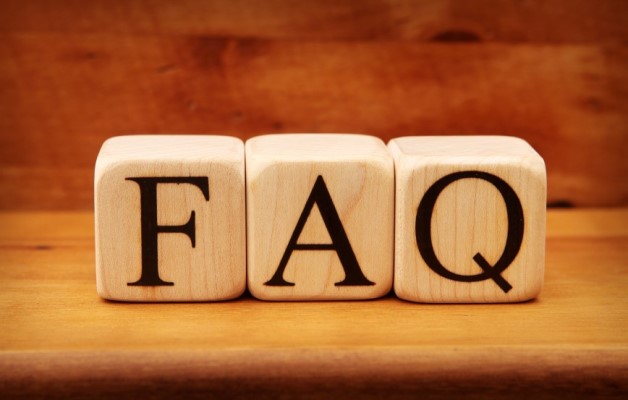If you're planning a trip to Mongolia, take a moment to read this section—it might have the answers you're looking for. Feel free to reach out if you have any questions not covered here. We're here to help!
The best time to visit Mongolia is from June to September, with July being the peak season due to the Naadam Festival. July and August are the wettest months, but you can still expect many sunny days. For exploring the Gobi, June to September is the ideal period.
Your driver plays a crucial role in making your Mongolian tour a success.
Outside of Ulaanbaatar, a 4x4 vehicle is essential as there are few paved roads. The tracks, often made of clay and sand, require a slow pace, but the scenic landscapes are a highlight of the journey.
You'll often feel like you're alone in the world, surrounded by nature. Passing through mountain passes without seeing anyone is a unique experience. Feel free to stop frequently to stretch your legs and take in the views.
The 4x4 vehicles in Mongolia are mainly Japanese and Korean mini-vans, well-suited for the challenging terrain.
For flights:
International Flights:
The main airlines are:
Korean Air via Seoul
Air China via Beijing
Turkish Airlines via Istanbul and Bishkek
Book your international flight well in advance, around six months ideally, especially during the short tourist season from July to August. The best rates for this period fill up months ahead.
The yurt, a symbolic representation of the Mongolian worldview, embodies profound sacredness tied to nature and its spiritual inhabitants. Adhering to specific rules is imperative when entering the yurt of a traditional Mongolian family, aligning with the strong and universal symbolism ingrained in its structure.
For those privileged with an invitation, understanding and applying these rules enhances the immersive experience and fosters genuine connections during your visit.
Rules for Entering the Yurt:
- If the door is closed, refrain from knocking before entering.
- Step into the yurt right foot first, avoiding contact with or stepping on the threshold.
- Never pass between the two central pillars.
- Refrain from standing or sitting on the bed to the left of the entrance door.
- Maintain respect for the symbolic space by keeping your hat on inside and entering without items that could be perceived as weapons.
Seating and Etiquette:
- When seated, avoid stretching your feet towards others or the fire.
- If invited to the right side bed, navigate behind the central pillars without crossing over someone on the floor.
Food and Beverages:
- Receive offerings with both hands or the right hand supported by the left elbow.
- Partake in the foods and drinks offered, demonstrating politeness.
- If offered alcohol and abstaining, politely touch your lips to the glass.
- When receiving something for the first time, particularly vodka, honor the spirits by dipping your right ring finger and releasing a drop in the air three times.
- Embrace politeness by generally accepting what is offered.
- Exercise care when cutting a piece of boiled meat, using your own knife if available.
- Show reverence to the fire by refraining from disposing of waste in it.
Navigating these customs with a respectful demeanor ensures a harmonious engagement with Mongolian nomadic families, where a smile and friendly attitude serve as bridges even if inadvertent faux pas occur.
Navigating the intricacies of riding a Mongolian horse demands a profound understanding of the equestrian traditions rooted in Mongolian culture. Prior to embarking on our horse riding tours, it is imperative to comprehend the unique techniques that govern Mongolian horsemanship.
Adapting to Mongolian Riding Tradition:
1. Saddle Customization:
- While traditional Mongolian saddles are not employed, our tailored saddles cater to the distinctive needs of foreign riders.
2. Equestrian Tradition Overview:
- The Mongolian riding technique aligns with the specific morphology of the Mongolian horse, emphasizing a high seat to balance the horse naturally.
3. Riding Posture Dynamics:
- Riders, elevated over the horse's back, strategically use short stirrups during trotting or cantering to distribute weight effectively.
4. Saddle Structure Significance:
- The saddle's design, featuring a high front and steeply inclined back, prevents excessive weight on the forehand, maintaining the horse's natural balance.
5. Reins and Body Movement:
- Communication is nuanced, with reins signaling direction changes, while the rider's body movement, especially weight shifts, plays a pivotal role.
6. Unique Equestrian Technique:
- The stop is primarily executed through seat utilization, liberating the horse's back from the rider's mass, thereby restoring natural locomotion.
7. Adapting to Mongolian Horse Traits:
- Riders must acclimate to a different riding technique and understand that Mongolian horses, living freely for a significant part of the year, might react uniquely to seemingly trivial behaviors.
Guidelines for Riding in Mongolia:
1. Approaching with Caution:
- Exercise a careful approach, particularly considering the horse's self-reliance and survival instincts.
2. Gentle Movements:
- Avoid sudden movements, especially when dressing or undressing, and refrain from leaning forward to accommodate the horses' natural responses to flies.
3. Reining Techniques:
- Employ neck reins and vocal cues rather than using legs for signaling gait changes.
4. Dismounting Technique:
- Safely dismount by keeping the foot in the stirrup, aligning with the horse's accustomed expectations.
5. Attire Considerations:
- Opt for secure clothing to prevent flapping in the wind, prioritizing raincoats over loose garments like ponchos.
In essence, the profound connection between rider and Mongolian horse necessitates an adept understanding of both equestrian tradition and the distinct characteristics of these resilient steeds.
Hotels
Our enterprise collaborates with centrally situated hotels in Ulaanbaatar, 4 stars, ensuring both comfort and variety. These establishments offer complimentary high-speed WIFI, television, and round-the-clock security.
You have three distinctive accommodation choices:
Touristic yurt camps: The epitome of comfort.
Guest-yurts hosted by nomadic families: Unparalleled authenticity.
Camping: Proximity to nature at its finest.
Touristic Yurt camps
Touristic Yurt camps, often referred to as "ger camps," epitomize the zenith of comfort within the Mongolian countryside.
Residing in traditional yurts, known as gers in Mongolia, entails a curated experience with single beds (ranging from 2 to 5 beds per yurt), petite tables, and a stove. While securing exclusive yurts may prove challenging in most camps, the likelihood of sharing accommodations with fellow travelers is high. Some camps do offer yurts with double beds, though this remains subject to availability.
Facilities such as showers, washbasins, and toilets are housed in a separate building, ensuring convenience. Additionally, a dedicated restaurant within the camp caters to your culinary needs, providing breakfast and other meals.
Guest yurts by nomadic families
Guest yurts hosted by nomadic families constitute an integral facet of our tours, featuring one night or more close to a nomadic family. This unique accommodation offers an immersive opportunity to engage with and comprehend the traditional lifestyle of nomadic herders in Mongolia.
Positioned near the family's central yurt, 2 or 3 guest yurts seamlessly integrate into the pastoral surroundings, where free-roaming horses, yaks, sheep, and goats paint an authentic pastoral picture. The guest yurts, each appointed with 4 or 5 single beds, are heated by a traditional stove, ensuring a snug repose.
Meals, a culinary journey in themselves, are served either within the family's yurt or in the open, contingent upon weather conditions. Observing the culinary prowess of the host, particularly their adept use of the central yurt stove, adds a fascinating dimension to the experience.
In consideration of your comfort, a shower tent is thoughtfully provided in proximity to the guest yurts, complete with the ingenuity of heating water on the traditional stove.
Camping
Mongolia stands as one of the few remaining countries where the freedom to camp is unrestricted. Our adventure tours navigate the most remote expanses of the nation, equipped with meticulously chosen camping gear to ensure an optimal experience amidst the wilderness. Recognizing the pivotal role that the quality of equipment plays in the success of your Mongolian journey, we exclusively employ recent camping gear that adheres to Western standards of safety and quality, guaranteeing your comfort.
All camping gear, including tents and riding equipment, undergoes scrupulous maintenance and post-trip inspections, with renewal as required.
For those seeking enhanced privacy, single tents can be provided at no additional cost for solo participants, contingent upon request before departure and subject to availability.
Our self-inflating mattresses are notably thick, prioritizing your comfort during restful moments. A spacious communal tent serves as the hub for meals and convivial gatherings, while our logistics vehicle ensures the provision of tables and chairs for picnic lunches, with exceptions made for extremely remote regions where pack horses are employed, as exemplified in Naiman Nuur Park.
Additionally, a designated "shower tent" is a fixture, with the added convenience of heating shower water on demand over a campfire. This provision extends to our "Nomadic Life Tours," acknowledging the extended duration spent with nomadic families.
Group Size:
- Our scheduled group tours vary in size, typically ranging from 4 to 14 people. We prefer keeping groups small to enhance the overall experience.
Private Tours:
- If you prefer a more personalized experience, we offer private tours for individuals, families, and groups. We can customize the trip according to your preferences.
Early Arrival Recommendation:
- It might be a good idea to arrive early, especially if you have long flights or significant time zone differences. This ensures a smoother transition into your travel adventure.
Vaccination and Health Protocols in Mongolia:
- For the majority of nationalities, vaccination mandates are not enforced. However, we strongly advise maintaining currency with routine vaccinations such as tetanus, typhoid, and hepatitis. Given the unique environmental factors, reliance on bottled water and cautious avoidance of raw fruits and vegetables is recommended. Physical fitness is paramount, especially considering the remote nature of certain regions. Ensure an adequate supply of personal medications in your carry-on to mitigate the impact of potential lost luggage. Furthermore, medical travel insurance is obligatory.
Temporal Parameters in Mongolia:
- Mongolia operates on UTC +08:00, underscoring the need for synchronization with local time dynamics.
Electrical Infrastructure:
- The electrical grid in Mongolia functions at 220V, 50Hz, employing plugs of types C, F, and G. While most yurt camps provide electricity for evening charging of devices, it is advisable to carry a power bank for camping expeditions. A solar charger can also prove invaluable in ensuring sustained power supply.
Luggage Essentials:
- Tailoring your luggage to the specific demands of your chosen Mongolian adventure is essential. Depending on the nature of your trip, whether it be a trek, ride, or hike, you will receive a detailed equipment list. Given the unpredictable weather patterns, be prepared for the possibility of experiencing all four seasons in a single day, even during midsummer. As such, pack both light and warm clothing, along with a windbreaker, to navigate the dynamic Mongolian climate effectively.
Accepted Credit Cards:
- The spectrum of acceptable payment methods within our purview encompasses Visa and MasterCard, providing a seamless and globally recognized transactional experience.
Currency Exchange Dynamics:
- While U.S. Dollars hold widespread acceptance, particularly in Ulaanbaatar, it is prudent to augment your financial arsenal with local currency—Tugrug. Facilitating this transition, banks, hotels, and ATMs throughout Mongolia offer comprehensive currency exchange services, ensuring the versatility to convert an extensive array of currencies into Tugrug.
You can check the real-time exchange rates online.



 Naranchuluun
Naranchuluun 